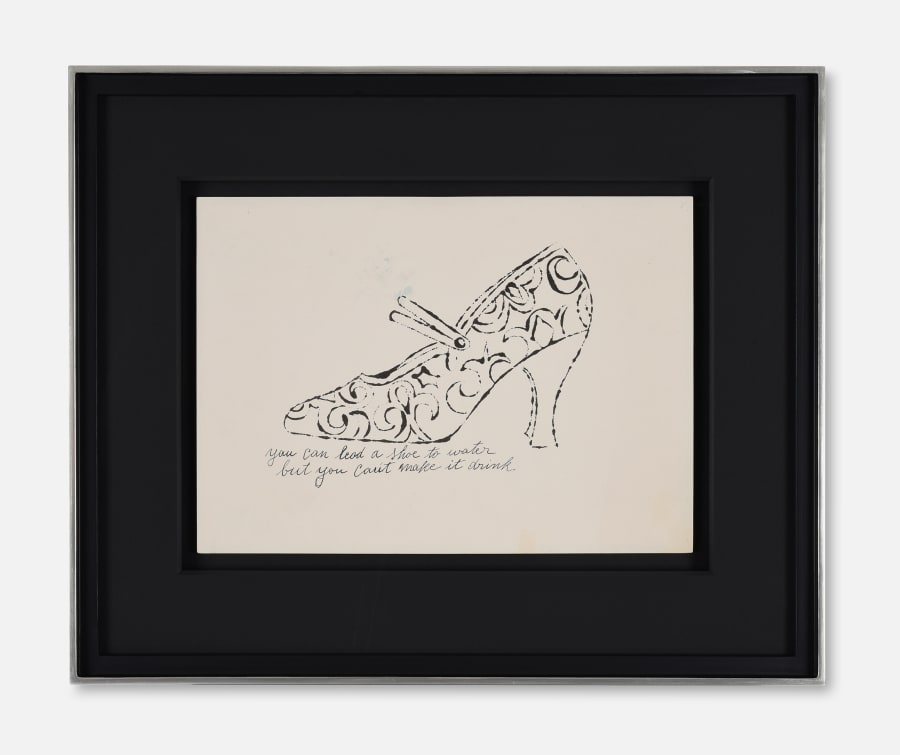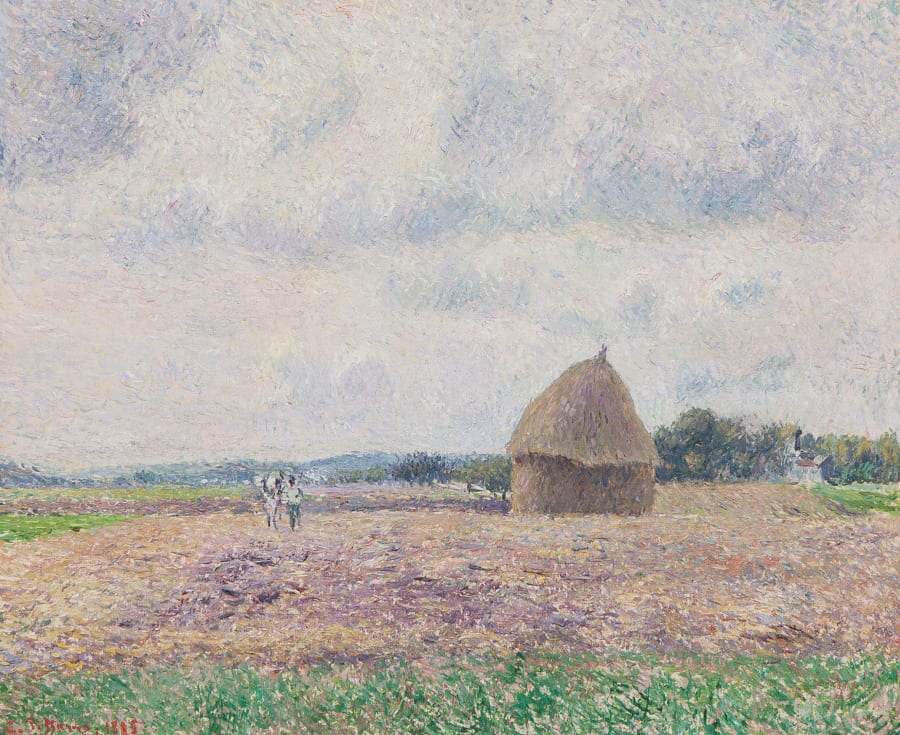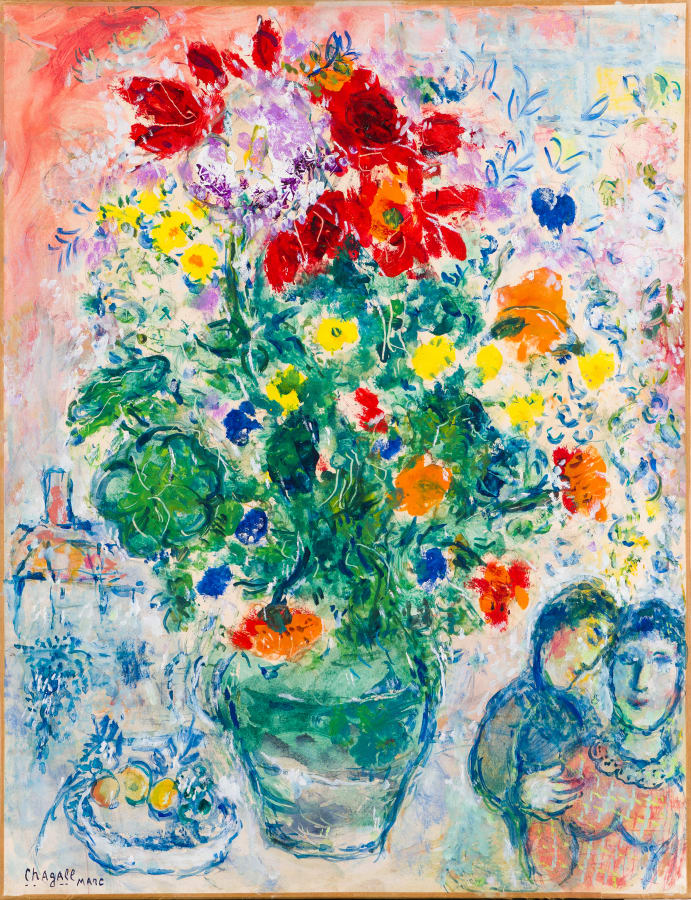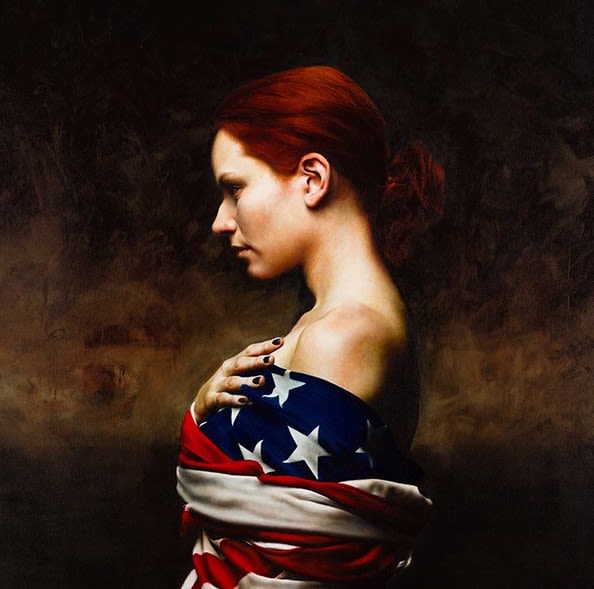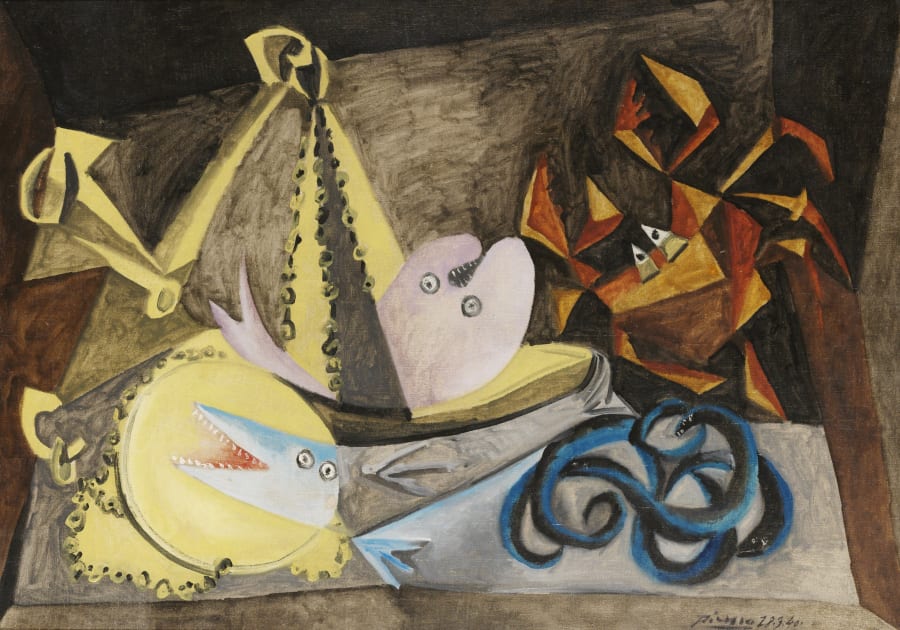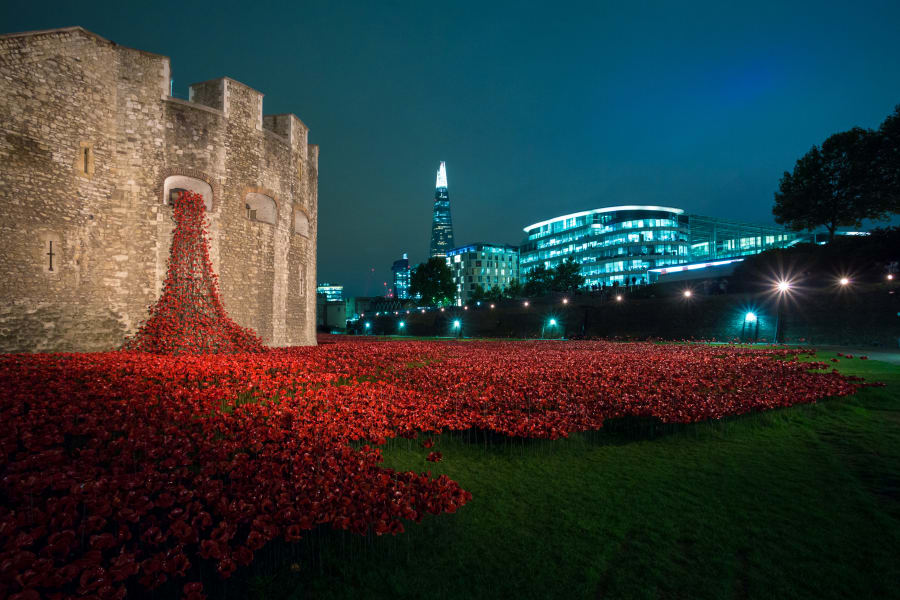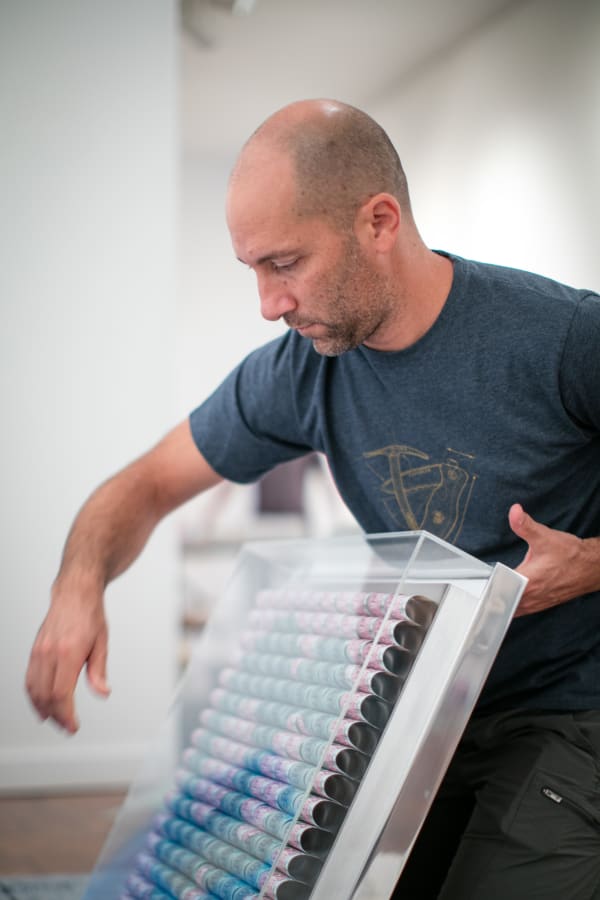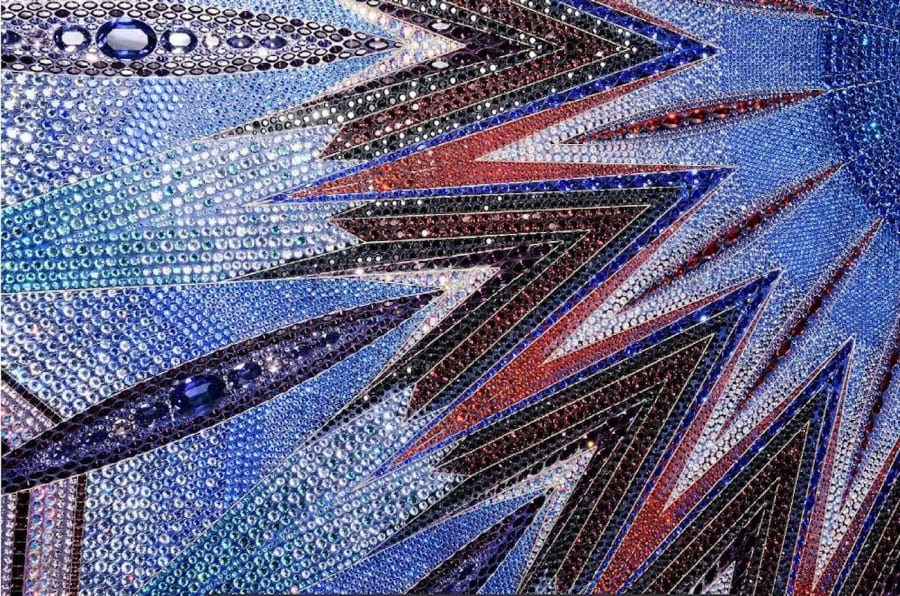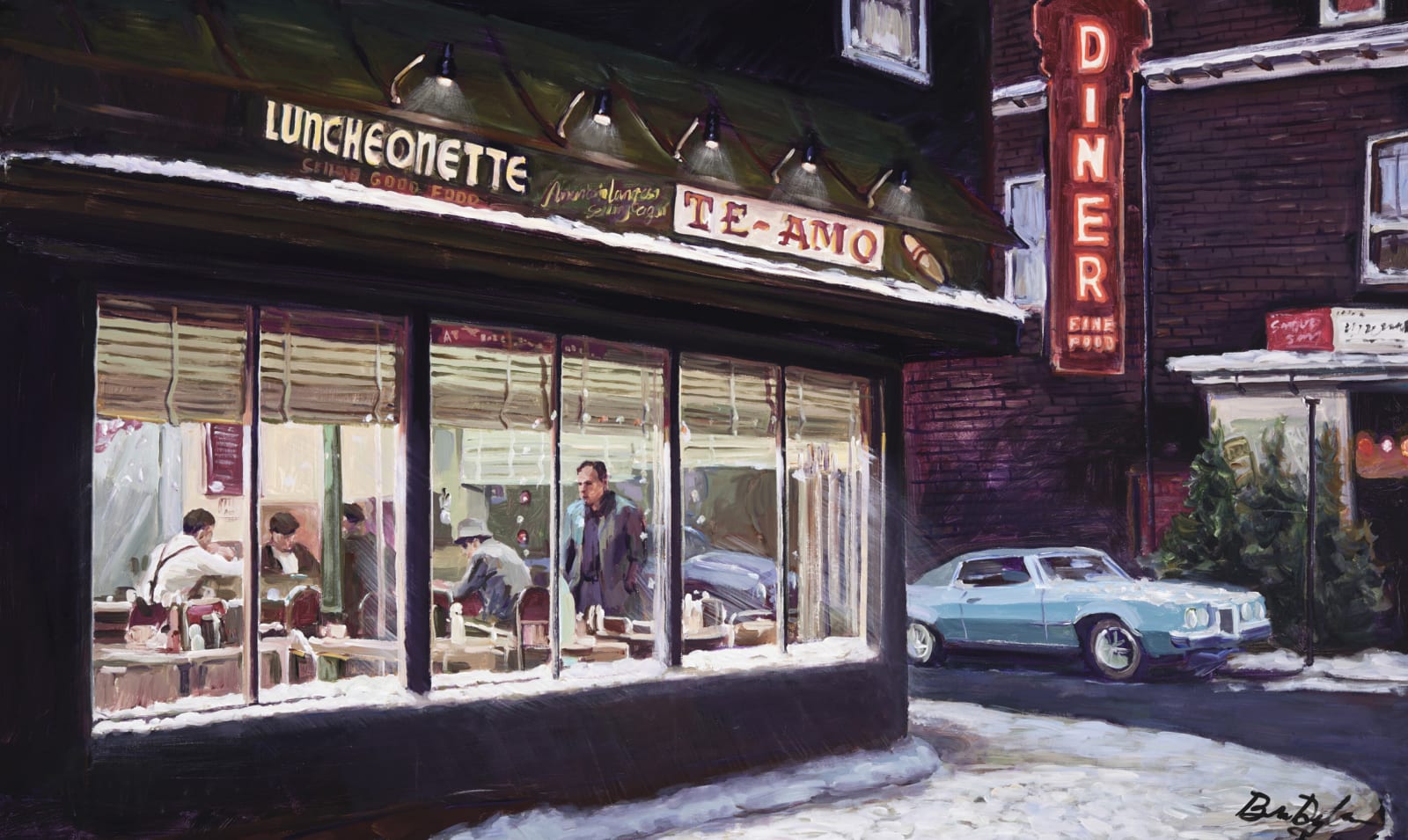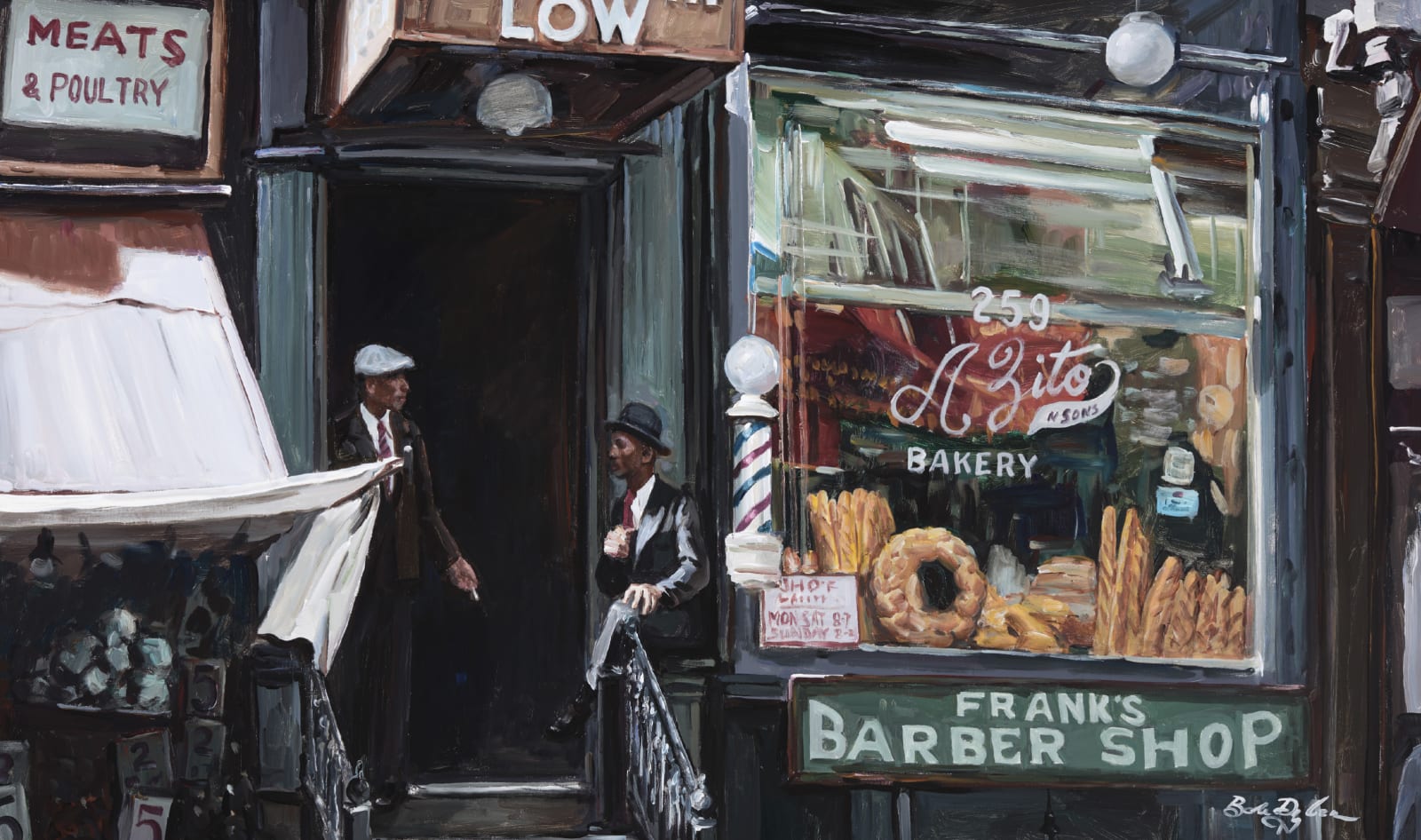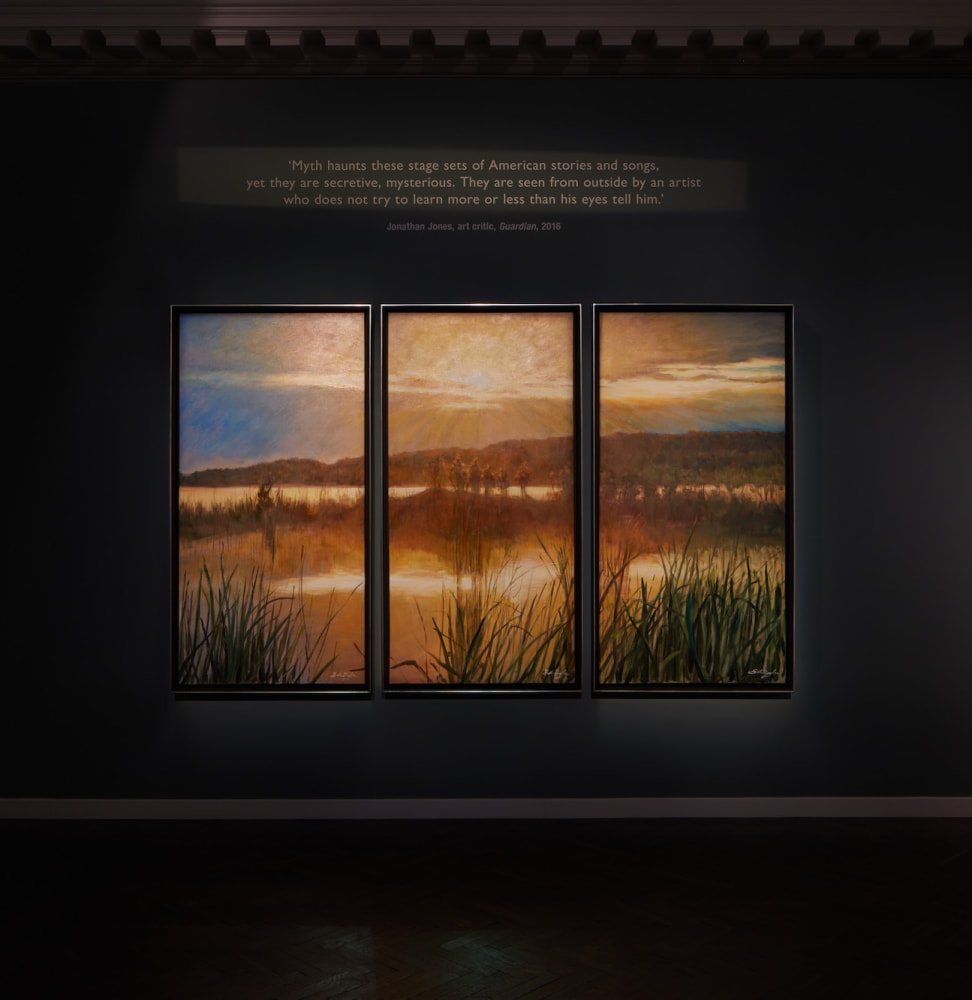Marc Chagall
Russian-born French, 1887–1985
One of the greatest figurative artists of the twentieth century, Marc Chagall was a Russian-born painter, printmaker and designer. His works portray the world with a dreamlike simplicity and a fusion of fantasy and nostalgia for life in the Jewish villages of Eastern Europe. ‘I have used cows, milkmaids, roosters … as a source of form because these … have left a deep impression in my visual memory.’
Chagall was born on 7 July 1887 in Vitebsk, a small city in the western Russian Empire (now Belarus), to a poor Hassidic family; his father worked in a herring warehouse and his mother ran a food shop. The eldest of nine brothers, he went to Jewish elementary school and then the local public school. Having learned the basics of drawing there, in 1906 he began studying painting with Yehuda Pen and in 1907 he left for St Petersburg to continue his artistic training. Joining the Society of Art Supporters, he studied with Nicholas Roerich, and from 1908 to 1910 he was trained by Léon Bakst. Chagall’s distinctive style, influenced by contemporary Russian painting, began to emerge, and in 1910 he was able to move to Paris, funded by an allowance from a patron in St Petersburg.
Living in Montparnasse in the artists’ enclave known as La Ruche, Chagall had an enormously productive period, mixing with leading Fauvist, Cubist and Surrealist painters. There he produced some of his most famous paintings of the Jewish shtetl, such as I and the Village (1911), and developed features that became recognisable trademarks of his art. Strong colour infuses his work with a joyous quality, while images from Vitebsk are placed seemingly randomly onto the canvas, often superimposed, upside-down or floating magically.
In June 1914, shortly before the outbreak of World War I, Chagall held his first one-man show at the Galerie der Sturm in Berlin, exhibiting some 200 works. Returning to Vitebsk after visiting the exhibition, he married Bella Rosenfeld in 1915 and their daughter, Ida, was born in 1916. Bella became Chagall’s muse and critic as well as his only model; she appears, for example, in Birthday (1915), with its characteristic floating couple and bouquet. In 1918 Chagall was appointed commissar of art for Vitebsk and director of the Free Academy of Art, but after a couple of years he found administrative disagreements intolerable and moved to Moscow. While serving as director of the Moscow Jewish State Theatre from 1919 to 1922 he painted a series of murals for the foyer and sets and costumes for plays by, among others, Sholem Aleichem.
In 1922, Chagall left Russia, settling in Paris a year later. During this period he wrote poetry, articles and his memoirs (published in Yiddish, his first language, in 1931). He painted such works as Bride and Groom with Eiffel Tower (1928) and launched into a parallel career as a printmaker. Ambroise Vollard commissioned a series of etchings to illustrate the sardonic novel Dead Souls by Realist Nikolai Gogol, for which Chagall produced 107 full-page plates in the early 1920s. Etchings for the fables of La Fontaine and the Bible followed. Begun for Vollard in 1930, the biblical series was interrupted by the war and finally completed and published as a set of 105 plates in 1956.
During the interwar years Chagall travelled widely, including visits to Palestine, Spain and Poland; he became a French citizen in 1937. On the outbreak of World War II he moved out of Paris, first to the Loire region and then further south. As the danger to Jews worsened, the symbolism of fear and death grew ever more apparent in such paintings as White Crucifixion (1938) and The Three Candles (1940). After being seized during a raid on Marseilles, Chagall was released due only to American intervention; he and his family fled to the United States in 1941 and remained there until 1948. During this time, he continued to paint tortured pictures, which took a new turn when his wife suddenly died in 1944. In Around Her (1945) he portrays her as a weeping wife and ghostly bride; the bridal theme is repeated in The Wedding Candles (1945).
In 1945 Chagall found some comfort with Virginia Haggard McNeil, his housekeeper, who became his lover and companion for seven years and the mother of his son, David. While in America, Chagall was commissioned to produce theatrical designs, including costumes and sets for a New York production of Igor Stravinsky’s ballet The Firebird. Large retrospective exhibitions in New York and Chicago acknowledged his pioneering role in Modernism.
Returning to France in 1948, Chagall lived first near Paris and then on the French Riviera. After McNeil left him in 1952 he married Valentina ‘Vava’ Brodsky. She encouraged him to take on large-scale public projects. The culmination of his fascination with biblical themes was the Message Biblique (Biblical Message, 1956–1966), 17 canvases conceived for the restoration of an abandoned chapel but later donated to the French state to distance them from a strictly religious context. In 1967 they were exhibited at the Louvre, an honour rarely granted to works by a living artist, and in 1973 the Musée Chagall was opened in Nice primarily to house them. As well as painting, in his later years Chagall continued to design for the theatre and in the late 1950s he started working with stained glass. Windows designed by him can be seen in Metz Cathedral, France (1958–1960), the synagogue of the Hadassah-Hebrew University Medical Centre in Jerusalem (1960–1961) and the United Nations headquarters in New York (1964). His output also included tapestries, ceramics and mosaics.
Chagall received many prizes and much recognition for his work. Just as a major retrospective was closing in London, he died in St-Paul de Vence, France, on 28 March 1985.
